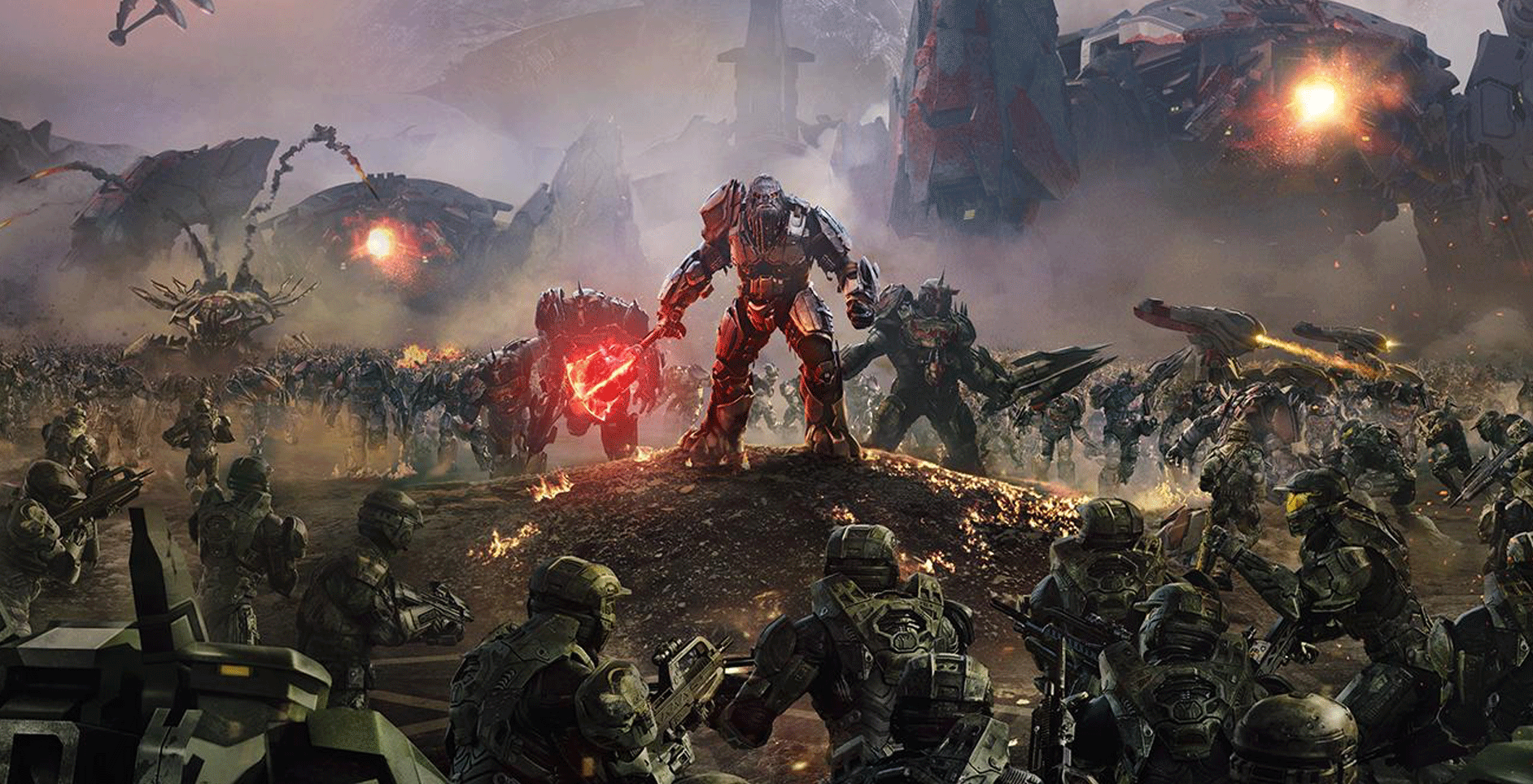When Halo Wars was originally released for the Xbox 360 in 2009, I was skeptical about the Halo franchise branching off from the FPS style that I had known and loved to a RTS, as I hadn’t played much of that genre previously. Nonetheless, as a Halo fanboy it was my duty to display my commitment to the brand, play this game and like it. To my surprise, I did so thoroughly and to my mother’s concern, spent the next 3 days completing all levels and objectives along with finding all of the skulls I could (I think I was maybe 2 short in the end). A grueling 8 years later see’s the release of the sequel, Halo Wars 2, on February 21st on Xbox One and Windows 10 and I recently had the privilege, nay the honor, to have early access to the game.
A lot has happened in this period of time within the Halo universe with Halo Wars 2 being set 28 years after the Halo Wars storyline and beginning just after the conclusion of Halo 5: Guardians. It was this aspect of the game that renewed my fondness for the Halo universe as these characters were now thrown into the scenario that was the same for Master Chief in the original Halo: Combat Evolved. The crew of UNSC warship Spirit of Fire have been in cryosleep for the last 28 years, completely unknowing of what has happened along with the involvement of the Forerunners, their technology and their structures. The story definitely becomes explorative as well as a fight for survival which follows the original plot but from a refreshed perspective. I’m not going to delve into the storyline too much but give more of a ‘what to expect’ from my first impressions of this game.
 After meeting with Clay Jensen, Design Director from 343 Industries, we were immediately thrown into the 2nd mission of the campaign, where I was filled with nostalgia as I remembered why it was that I fell in love with this game in the first place. It is a Halo game at its core and that is immediately felt as you start to upgrade your bases, recruiting troops that you have seen in every short, comic and cinematic, preparing yourself for the inevitable attack of aliens that, at times, you have come to fear. As a game that was originally shallow in the sense of RTS, I feel the sequel has evolved at a fundamental level to more align itself with the true nature of the genre. I felt that the first game was very much linear in your objectives and in the way you pursue them but this game has grown to accommodate for the play style of different players. And this was just the campaign.
After meeting with Clay Jensen, Design Director from 343 Industries, we were immediately thrown into the 2nd mission of the campaign, where I was filled with nostalgia as I remembered why it was that I fell in love with this game in the first place. It is a Halo game at its core and that is immediately felt as you start to upgrade your bases, recruiting troops that you have seen in every short, comic and cinematic, preparing yourself for the inevitable attack of aliens that, at times, you have come to fear. As a game that was originally shallow in the sense of RTS, I feel the sequel has evolved at a fundamental level to more align itself with the true nature of the genre. I felt that the first game was very much linear in your objectives and in the way you pursue them but this game has grown to accommodate for the play style of different players. And this was just the campaign.
Team Deathmatch definitely summoned the overly competitive side of my personality as media representatives were partnered off and put against each other. I would absolutely love to see this aspect of the game be represented in an eSports tournament of some kind. Once tactical discussions were finalized amongst teammates, the game commenced. You start off by choosing a leader to represent your factions and these come with an array of perks. As the game progresses, leader points are awarded for surpassing certain checkpoints within the game that can be spent on passive and active skills that are unique to that leader. This can improve your assault, devastate an enemy wave or provide support for your allies. It was a combination of these abilities and evolving gameplay that allowed you to identify the different ways in which people play a RTS. I played more of an ‘upgrade everything resource horder’ while my partner played an ‘aggressive sneak-attack assaulter’, which worked incredibly well together since we won the match some 50 minutes later.

You pick a hero that plays to your particular strengths as an RTS player and use this to overcome your opponent/s. This could be through the collecting of resources, constructing multiple bases and researching everything (my tactic) or through sending an individual scouting unit behind their base and constantly dropping a ‘glassing cannon’ on them (partners tactics). I experienced the same giddy nervousness, excitement and satisfaction that I had grown accustom to when playing online team deathmatch in FPS’s like Halo, Destiny and Overwatch.
We were finally exposed to the new gameplay mode Blitz. This was a mode of gameplay that I have never seen before. It is the combination of RTS elements along with deck building and rushed decision making based off the cards that you have at your disposal. I learnt very quickly in this game mode that mistakes can easily be made and can put you on the defensive. Like in team deathmatch, players have access to a range of leaders, each with their own strengths and variety of cards that can be used to summon units. Each team has a base of operation and control points that need to be captured. Holding these bases for specific periods of time adds to your tickets and first to 200 tickets win; a mechanic similar to that of the Battlefield games. Playing your unit cards within held checkpoints or your base summons them at full health whereas playing them on the field results in them spawning at half health. Summoning units just outside of an enemy’s held checkpoint for an assault is a bit of a gamble, and with limited resources, pushing too hard can cost you the game. Personally, this isn’t a mechanic I have experienced previously but it is one that I have immediately fallen for and can not wait to explore some more.

There were many times during the multiple game modes where I found myself taken away from the competitiveness and objectives to just sit and watch the individual and group animations of the multiple aspects of the game. It is a vivid and beautiful environment that makes the game inviting but can suddenly become chaotic as large scale battles can take over areas of the map.
Overall, the game is Halo. Veterans of the franchise will experience flashbacks to previous games as they take control of the battlefield they love whereas veterans of RTS’s will enjoy the uniqueness that this game has to offer. I look forward to the game’s release on February 21st.



